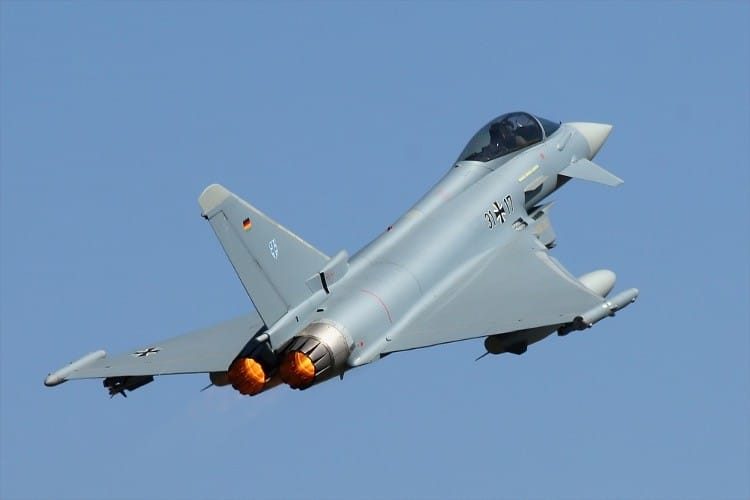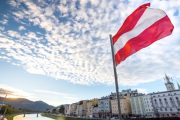
NATO fighter jets were scrambled 570 times to monitor Russian military flights in international airspace last year, according to a report by Radio Free Europe. The figure implies that the number of such intercepts almost doubled from 2021, a NATO spokesman confirmed after a report by the German media group Redaktionsnetzwerk Deutschland. NATO sources claim that the rise was not only owing to more activity by the Russian military, but also to a more robust NATO presence on the bloc’s eastern flank because of the Ukraine-Russia crisis. Hence, considerably more aircraft were available for air surveillance there. Most of the intercepts happened over the Baltic Sea.
France and Germany could be “game-changers,” Ukrainian President Volodymyr Zelensky said following a photo-op at the Élysée Palace when he was in France for a visit. French President Emmanuel Macron reiterated Paris’ backing for Kyiv, adding, “As long as Russia continues to attack, we will continue to adapt and moderate the necessary military support to preserve Ukraine and its future.”
Just hours before, British Prime Minister Rishi Sunak had welcomed Zelensky to London with a pledge to widen the U.K.’s training program for Ukrainian personnel to include fighter pilots.
The program will “ensure pilots are able to fly sophisticated NATO-standard fighter jets in the future,” 10 Downing Street declared. Deploying F-16, F-35, and Typhoon fighter jets had previously been ruled out by the U.K. and United States, as the move was considered a “red line” for Ukraine’s global allies.
Moreover, the move was significant because “it is a further step down the road” for Ukraine’s Western partners, retired Air Commodore Andrew Curtis told Newsweek. “It’s sending a message to the U.K.’s allies, that it is still supporting [Kyiv] and intends to continue to do so.”
Furthermore, Sunak said “nothing was off the table,” and that advanced fighter jets were “part of the conversation.”
The pledge was “made to set an example,” based on former British military intelligence officer Frank Ledwidge. After talks with military specialists, Newsweek outlined the obstacles in Kyiv’s path to NATO-supplied jets taking to Ukraine’s skies.
Observers contend that one of the very first issues Kyiv could face would be determining exactly which aircraft to send. After all, the U.K.’s declaration that it would support Ukraine was not an offer of specific fighter jets — or any jets at all — but a pledge of some form of training on NATO-standard aircraft.
“What I think the UK is probably offering is ground-based training and structured education, to effectively make the Ukrainian pilots better fighter pilots, without actually putting them in a cockpit and getting them in the air,” Curtis said. However, the training is not specific to any particular NATO-standard jet thus far.
“At the end of the day, you would only want to train a pilot on an aircraft type that they are then going to be given to operate,” Curtis added. “It makes no sense for the UK to put a Ukrainian pilot in a Typhoon, if then, in a few months’ time, the Ukrainian pilot is going to get an F-16. That is just a complete waste of time.”
Each jet — whether it be an F-16, F-35, Typhoon, Gripen, or the French Rafale — also needs some aircraft-specific training.
“You need to be trained and cleared for each aircraft,” Ledwidge told Newsweek. “If you can fly an F-16, you can certainly fly a Typhoon,” he said.
Yet analysts think that the U.K.’s range of F-35 stealth aircraft would most probably not be supplied to Ukraine. They are “off the table,” Ledwidge said, elaborating that the U.K. does not “have enough” and definitely “can’t afford to lose any.”
“That’s a definite non-starter,” Curtis added. The multi-role aircraft, made by U.S. defense manufacturer Lockheed Martin, are the British Air Force’s most advanced fighter jets. The F-35Bs are “out of the question,” wrote Justin Bronk of the Royal United Services Institute think tank based in London.
Earlier this year, NATO Secretary-General Jens Stoltenberg said that Ukraine needed a “significant increase” in weapons, with support from its allies as the only path to achieve a negotiated peaceful solution.
“This is a pivotal moment in the war and the need for a significant increase in support for Ukraine,” Stoltenberg told Reuters in an interview on the sidelines of the globalist World Economic Forum in Davos, Switzerland.
“If we want a negotiated peaceful solution tomorrow we need to provide more weapons today.”
That being said, Stoltenberg had said consultations were continuing, notwithstanding his approval of a British decision to dispatch Challenger tanks to Kyiv.
Britain hitherto mounted pressure on Berlin by becoming the first Western country to send tanks, offering a squadron of 14 Challengers. Nonetheless, the German Leopard II tanks were regarded as the best option to supply Ukraine with a large-scale tank force.
Kyiv had also said that it hoped new Western weapons, particularly heavy tanks which would offer its troops increased mobility and protection to advance beyond Russian lines in the east and south of the country, would help increase its military prowess in the conflict this year.
Apart from tanks, Stoltenberg said Ukraine required more air-defense systems and armor as well as ammunition, spare parts, and maintenance capabilities to ensure that its existing weapons could still operate.
He said that while the situation along battlefronts had stabilized over the past weeks preceding the WEF in January, prolonged bitter fighting in the eastern city of Bakhmut showed the importance of pledging more weapons to support Ukraine.
“[Russian] President [Vladimir] Putin has shown no sign of preparing for peace and therefore he must realize he cannot win on the battlefield,” Stoltenberg added.
Indeed, there seems to be no light at the end of the tunnel in Bakhmut, the stage for the longest battle of the Ukraine-Russia crisis. “It’s like Verdun out there,” said Ivan, an ambulance driver waiting on a roadside outside the battered industrial city in the eastern Donetsk region.
Like the 1916 fight on the western front in France, the battle for Bakhmut, now in its seventh month, has been long and bloody.
Meanwhile, Zelensky urged for more weapons from Western allies.
“If weapon [deliveries] are accelerated — namely long-range weapons — we will not only not withdraw from Bakhmut, we will begin to de-occupy Donbas,” he told senior EU leaders in Kyiv earlier this month, alluding to the wider region, including Donetsk.
“We will fight as long as we can” for Bakhmut, he said.


